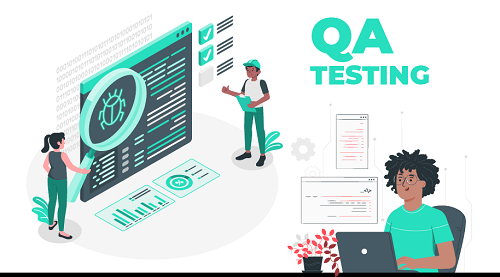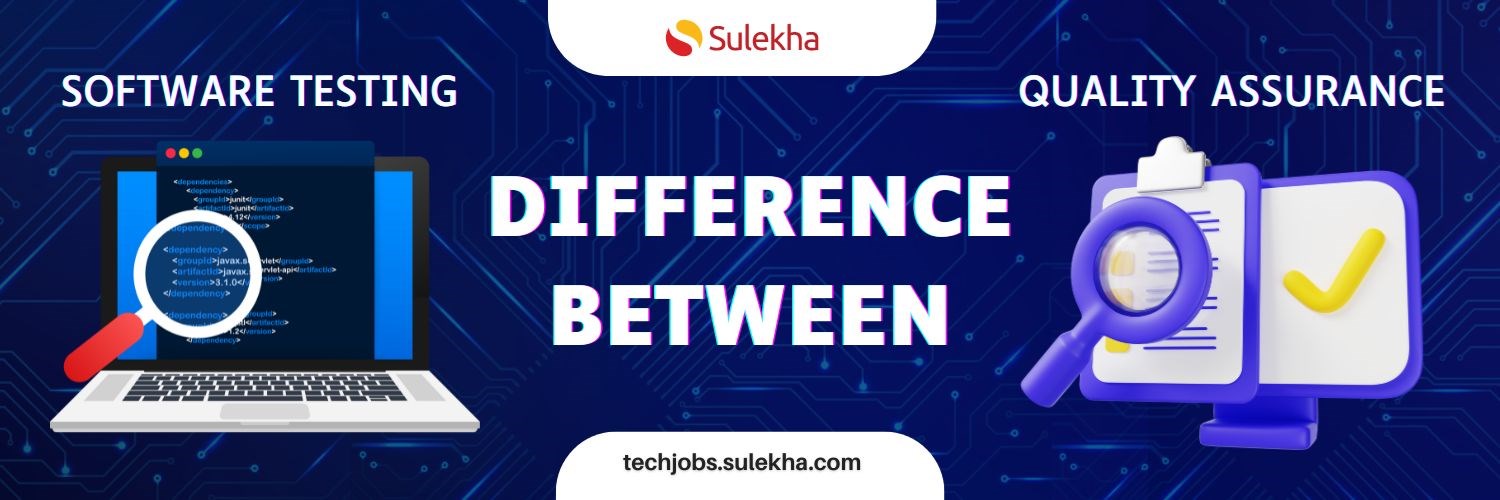The Innovation behind QA Testing – Important Steps for Tech Deployment

Introduction
QA testing is an important part of tech deployment, ensuring that everything works correctly and that users have the best experience possible. In this essay, we will discuss the innovation behind QA testing and the important steps that must be taken when deploying new technologies.
QA testing is a process in which software is tested to ensure that it meets the necessary requirements and specifications. This includes testing for compatibility, functionality, usability, and performance. QA testing is a critical part of the development process and is often used to identify and fix any problems before they affect users. In this article, we will discuss the innovation behind QA testing and the necessary steps involves in tech deployment.
Quality Assurance Plan
One of the most important steps in QA testing is establishing a quality assurance plan. This plan outlines what will be tested, how it will be tested, and when it will be tested. It also describes the procedures that will be used to identify and fix any problems with the software.
QA testing is an important part of ensuring that a product meets customer requirements and specifications. It helps to identify potential issues before they become more serious problems. Testing can be done in various ways, depending on the product being tested. Overall, QA testing is an essential step in ensuring that products meet customer expectations.
The process of testing a product can be divided into five stages:
1. Planning
2. Setting up the product
3. Testing the product
4. Reporting results and taking action if needed
5. Closing out the process
The steps in each stage are outlined below:
Planning is essential to any testing process, as it helps to identify which tests should be run and when. The QA team needs to determine which features of the product need to be tested and how they should be tested. They also need to decide which problems to focus on and what type of testing should be done.
Setting up the product is where the actual testing takes place. The QA team will use various tools and techniques to test the product in a variety of ways. This includes using it in real-world situations, performing stress tests, and testing for compatibility with other software products.
Reporting results and taking action if needed are essential steps in any testing process. The QA team needs to track which tests have been run and the results of those tests. They also need to decide any necessary changes regarding the product on basis of the testing results.
Closing out the process is also important, as it ensures that all test data is captured and stored in a way that is easy to access. This data can then be used later on if needed for debugging or diagnostics purposes. Closing out the process also helps to ensure that everyone involved in testing understands the results of their efforts.
Overall, the QA team needs to determine which features of the product need to be tested, which problems should be focused on, and what type of testing should be done in order to ensure that the product is ready for release. They also need to track results and make necessary changes if needed. Finally, closing out the process helps to ensure that everyone involved understands the results of their work.
Another important step in QA testing is setting up an environment for testing. This environment includes all the necessary equipment and software to test the software. Often, this environment is based on real-world scenarios or user scenarios. Once the environment is set up, QA testers will begin testing the software. They will typically test for compatibility, functionality, usability, and performance. They also may test to see if the software meets specific requirements or specifications.
Manual and Automated Testing
QA testing is an important part of the development process and can help ensure that the software meets necessary requirements and specifications. It can be divided into two main categories: manual and automated testing. Automated QA testing uses tools to automate the process of reviewing software. Manual QA testing, on the other hand, uses tools to automate the process of testing software. Both methods have their benefits and drawbacks, but in general, automated QA testing is faster and more accurate than manual QA testing. One of the most important steps in QA testing is establishing a quality assurance plan. This plan outlines what will be tested, how it will be tested, and when it will be tested. It also describes the procedures that will be used to identify and fix any problems with the software.
Conclusion
Quality assurance (QA) has always been essential in ensuring that products released onto the market meet certain standards and are reliable. With so much focus on the internet and digital technology, it is no surprise that products incorporating these technologies often require a high level of QA testing before they are released to the public.
Find a course provider to learn QA
Java training | J2EE training | J2EE Jboss training | Apache JMeter trainingTake the next step towards your professional goals in QA
Don't hesitate to talk with our course advisor right now
Receive a call
Contact NowMake a call
+1-732-338-7323Take our FREE Skill Assessment Test to discover your strengths and earn a certificate upon completion.
Enroll for the next batch
qa certification courses
- Dec 8 2025
- Online
qa certification courses
- Dec 9 2025
- Online
qa certification courses
- Dec 10 2025
- Online
qa certification courses
- Dec 11 2025
- Online
qa certification courses
- Dec 12 2025
- Online
Related blogs on QA to learn more

How to become a QA tester? Skills, Requirements, and Jobs in 2023
Learn how to become a QA tester and how to excel in this dynamic career and ensure high-quality software products.

Difference Between Software Testing and Quality Assurance
Discussed, what are Software testing and Quality assurance are, what is the difference between Software Testing and Quality Assurance, roles, and salary perks.

How to Become a QA Tester
Embark on an exciting journey to learn to be a QA tester and unlock endless possibilities in the dynamic world of software testing. QA testing is an emerging and demanding career path for freshers and professionals who intend to get into the softw

The Innovation behind QA Testing – Important Steps for Tech Deployment
Quality assurance (QA) has always been essential in ensuring that products released onto the market meet certain standards and are reliable. With so much focus on the internet and digital technology, it is no surprise that products incorporating thes

ISTQB Foundation Level Mock Test Sample Questions with Answers
We have prepared ISTQB foundation level certification exam self study and practice test sample questions answers to evaluate your skills to clear the foundation level. We have collected a list of istqb foundation level previous question papers with a

ISTQB Sample Questions and Answers to practice for Passing Score
ISTQB Certification exam question and answers - Get benefited with ISTQB agile tester exam questions and answers to check your testing ability before attending to the exam. Take advantages of these ISTQB questions online to practice and memorize the

Find list of Institutions for Quality Assurance Certification Course
The motive of this content is to connect students all over the world to the best instructors; this article will help individuals to reach goals and pursue their dreams. We believe the world’s best QA teachers and training providers are found in this

Software Quality Assurance Syllabus for Beginners and Testing Professionals
Have you ever been thought of becoming a software testing professional, and wanted to know what you will learn during the training? After reading the content, you will probably have a good idea of assignments, projects, exams. This QA syllabus is des

Proven strategies to develop Quality Assurance testing!
When it comes to software quality assurance, there are plenty of things needs to be taken into account. Especially for software testing such as the type of product, development process, and different stages of the testing process, it plays a very vit

Modern Quality Assurance Technique!
As soon as the developer starts building the software, the start testing them as well. Quality assurance, of course, is a crucial part of a software development which determines the success or failure of the product in the market. But have you ever w
Latest blogs on technology to explore

From Student to AI Pro: What Does Prompt Engineering Entail and How Do You Start?
Explore the growing field of prompt engineering, a vital skill for AI enthusiasts. Learn how to craft optimized prompts for tools like ChatGPT and Gemini, and discover the career opportunities and skills needed to succeed in this fast-evolving indust

How Security Classification Guides Strengthen Data Protection in Modern Cybersecurity
A Security Classification Guide (SCG) defines data protection standards, ensuring sensitive information is handled securely across all levels. By outlining confidentiality, access controls, and declassification procedures, SCGs strengthen cybersecuri

Artificial Intelligence – A Growing Field of Study for Modern Learners
Artificial Intelligence is becoming a top study choice due to high job demand and future scope. This blog explains key subjects, career opportunities, and a simple AI study roadmap to help beginners start learning and build a strong career in the AI

Java in 2026: Why This ‘Old’ Language Is Still Your Golden Ticket to a Tech Career (And Where to Learn It!
Think Java is old news? Think again! 90% of Fortune 500 companies (yes, including Google, Amazon, and Netflix) run on Java (Oracle, 2025). From Android apps to banking systems, Java is the backbone of tech—and Sulekha IT Services is your fast track t

From Student to AI Pro: What Does Prompt Engineering Entail and How Do You Start?
Learn what prompt engineering is, why it matters, and how students and professionals can start mastering AI tools like ChatGPT, Gemini, and Copilot.

Cyber Security in 2025: The Golden Ticket to a Future-Proof Career
Cyber security jobs are growing 35% faster than any other tech field (U.S. Bureau of Labor Statistics, 2024)—and the average salary is $100,000+ per year! In a world where data breaches cost businesses $4.45 million on average (IBM, 2024), cyber secu

SAP SD in 2025: Your Ticket to a High-Flying IT Career
In the fast-paced world of IT and enterprise software, SAP SD (Sales and Distribution) is the secret sauce that keeps businesses running smoothly. Whether it’s managing customer orders, pricing, shipping, or billing, SAP SD is the backbone of sales o

SAP FICO in 2025: Salary, Jobs & How to Get Certified
AP FICO professionals earn $90,000–$130,000/year in the USA and Canada—and demand is skyrocketing! If you’re eyeing a future-proof IT career, SAP FICO (Financial Accounting & Controlling) is your golden ticket. But where do you start? Sulekha IT Serv

Train Like an AI Engineer: The Smartest Career Move You’ll Make This Year!
Why AI Engineering Is the Hottest Skillset Right Now From self-driving cars to chatbots that sound eerily human, Artificial Intelligence is no longer science fiction — it’s the backbone of modern tech. And guess what? Companies across the USA and Can

Confidence Intervals & Hypothesis Tests: The Data Science Path to Generalization
Learn how confidence intervals and hypothesis tests turn sample data into reliable population insights in data science. Understand CLT, p-values, and significance to generalize results, quantify uncertainty, and make evidence-based decisions.